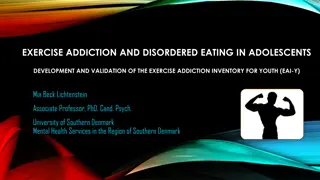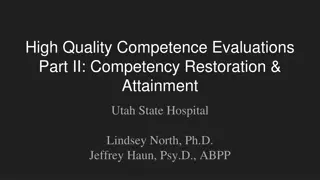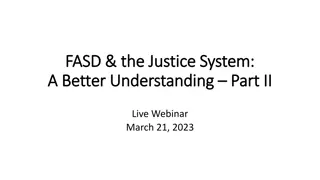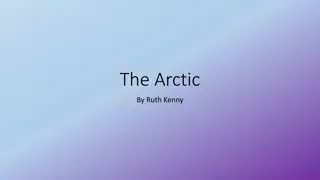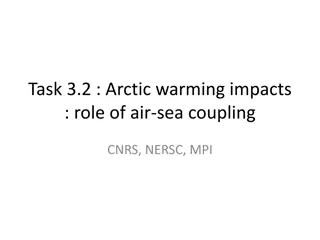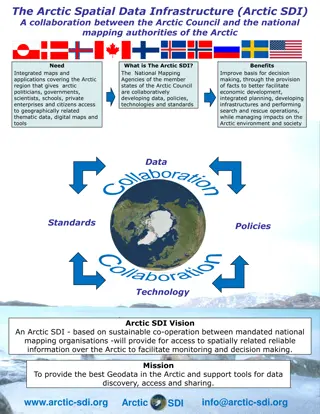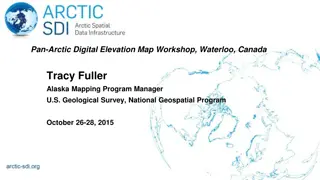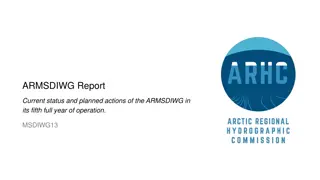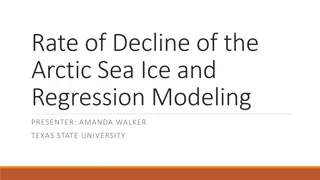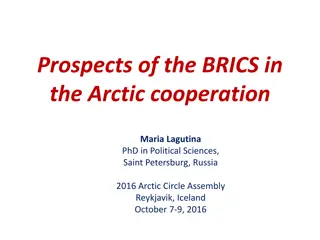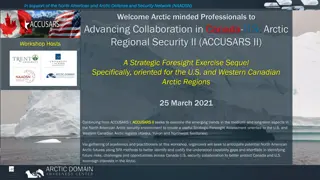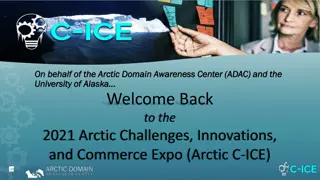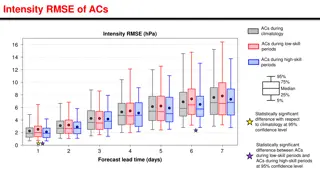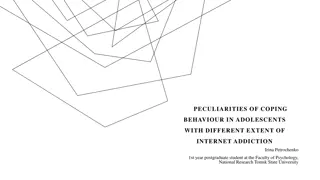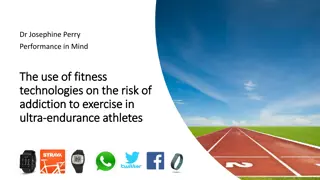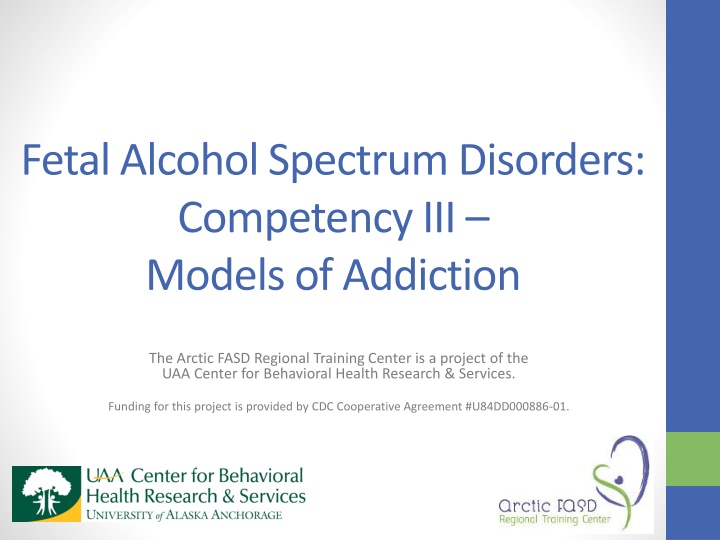
Models of Addiction: Understanding Different Perspectives
Explore various models of addiction, including moral, sociocultural, addictive disease, psychological, and biomedical models. Understand how these models influence treatment strategies and perceptions of addiction.
Download Presentation

Please find below an Image/Link to download the presentation.
The content on the website is provided AS IS for your information and personal use only. It may not be sold, licensed, or shared on other websites without obtaining consent from the author. If you encounter any issues during the download, it is possible that the publisher has removed the file from their server.
You are allowed to download the files provided on this website for personal or commercial use, subject to the condition that they are used lawfully. All files are the property of their respective owners.
The content on the website is provided AS IS for your information and personal use only. It may not be sold, licensed, or shared on other websites without obtaining consent from the author.
E N D
Presentation Transcript
Fetal Alcohol Spectrum Disorders: Competency III Models of Addiction The Arctic FASD Regional Training Center is a project of the UAA Center for Behavioral Health Research & Services. Funding for this project is provided by CDC Cooperative Agreement #U84DD000886-01.
Road Map for Presentation Models of alcohol use Categories of alcohol use Stages of alcohol use in women Stages of change in alcohol use Coexisting disorders Alcohol dependent families
Terminology of FASD Fetal alcohol spectrum disorders FASD is an umbrella term Describes range of effects caused by prenatal alcohol exposure FAS is a subset of FASD Image source: State of Alaska Division of Health and Social Services FASD 101: Insights into Fetal Alcohol Spectrum Disorders.
PAST AND CURRENT MODELS OF ALCOHOL USE
Evolving Models of Addiction Definitions of alcohol-related problems change through time Conceptualization of a problem influences treatment strategy Different models may exist simultaneously
Models of Addiction Moral Model Sociocultural Model Addiction is an individual choice Lack of moral strength Treatment Recognition of sinfulness Ask for help Accept punishment from moral authorities Accepted back into society Addiction is facilitated by society Social norms and marginalization Treatment Education Economic opportunity Reintegration into society
Models of Addiction Addictive Disease Models Psychological Model Addiction promoted through observation of others Lack of coping skills Treatment Learning positive coping skills Reducing stressors Resolving emotion problems Addiction is incurable disease Biology, personality, and spiritual dysfunction Denial and loss of control Treatment Abstinence Inpatient or outpatient treatment AA approach
Models of Addiction Biomedical Model Recovery Addiction is multifaceted Bio-psycho-social origin Many different programs Recovery is a unique, individual and personal journey Recovery Principles Hope, empowerment, inclusion Secure base Self Supportive relationships Coping strategies Purpose and meaning Addiction is a brain disorder Genetics and environment Alcohol abused because it stimulates brain s reward pathway Treatment Drug substitution Medication for symptoms Brief psychotherapy
Treatment Programs Most contemporary addiction professionals and treatment centers do not fit precisely with any one of the above models. Determining which modality of treatment is best is best left to the family and the individual needing treatment.
Models of Addiction Alcoholism Alcoholism is a primary, chronic disease with genetic, psychosocial, and environmental factors influencing its development and manifestations. The disease is often progressive and fatal. It is characterized by continuous or periodic impaired control over drinking, preoccupation with the drug alcohol, use of alcohol despite adverse consequences, and distortions in thinking, most notably denial.
Models of Addiction Addictive Disease Process Craving and compulsion Loss of control Continued use despite adverse consequences
Alcohol Use by Women More than 50% of women 18-44 report some alcohol use 12% report binge drinking 12% of pregnant women report consuming alcohol during pregnancy 2%-4% pregnant women report binge drinking Alcoholic drink containers may hold multiple standard drinks
Categories of Alcohol Use Abstainers Low-risk drinkers At-risk drinkers Problem drinkers Alcohol dependent drinkers
Categories of Alcohol Use Alcohol Abuse Criteria Failure to fulfill major role obligations because of drinking Recurrent drinking in hazardous situations Recurrent legal problems related to alcohol Continued use despite recurrent social and interpersonal problems
Categories of Alcohol Use Alcohol Dependence Criteria Tolerance Withdrawal syndrome Impaired control Drank more or longer than intended Neglect of activities Time spent related to drinking or recovering Continued use despite consequences
STAGES OF ALCOHOL USE, DEPENDENCE, AND ADDICTION
Medical Criteria for Alcohol Use Disorders AMA recognized alcoholism as a disease in 1956 90% of adults in the US have had some experience with alcohol Alcohol-related adverse life events 60% of men 30% of women
DSM-IV Codes for Alcohol Use 303.90 Alcohol Dependence 305.00 Alcohol Abuse 303.00 Alcohol Intoxication 291.81 Alcohol Withdrawal
Stages of Use Tolerance Physical dependency Major organ change
Treatment for Alcohol Use Treatment depends on stage of use Alcoholics Anonymous (12-step program) Cognitive-Behavioral Therapy (CBT) Motivational Enhancement Therapy (MET) Pharmacotherapy (medication) Alcohol dependence treatment Withdrawal and detoxification Intervention to maintain abstinence Long lasting effects and relapse Neurobiologic effects and cravings Relapse triggers (stress, relationship problems, etc.)
Stages of Change Pre-Contemplation Contemplation Preparation Action Maintenance/Relapse
Stages of Change Precontemplation Contemplation Preparation Action Maintenance/Relapse
ALCOHOL AND CO-OCCURRING PSYCHIATRIC DISORDERS
Co-occurring Psychiatric Disorders Alcohol use disorder(s) PLUS mental disorder(s) Diagnosis of mental disorder must be independent of alcohol use
Co-occurring Psychiatric Disorders Assessment necessary for proper intervention Interventions can include: Psychopharmacology Counseling CBT Motivational enhancement therapy Interventions should be targeted
CHARACTERISTICS OF ALCOHOL- DEPENDENT FAMILIES
Alcohol-dependent Families Genetic Influences Effects of alcohol on the individual Addictive tendency of the individual Metabolism of alcohol in the body Individual alcohol tolerance level
Alcohol-dependent Families Family Risk Factors Parental use of alcohol associated with children s use of alcohol Adverse childhood experiences are associated with subsequent alcohol abuse Lack of parental involvement in child s life linked to subsequent alcohol abuse later in life
In Closing. Models of alcohol use Categories of alcohol use Stages of alcohol use in women Stages of change in alcohol use Coexisting disorders Alcohol dependent families
Arctic FASD Regional Training Center www.uaa.alaska.edu/arcticfasdrtc arcticfasdrtc@uaa.alaska.edu 907.786.6381 The Arctic FASD Regional Training Center is a project of the UAA Center for Behavioral Health Research & Services. Funding for this project is provided by CDC Cooperative Agreement #U84DD000886-01.

